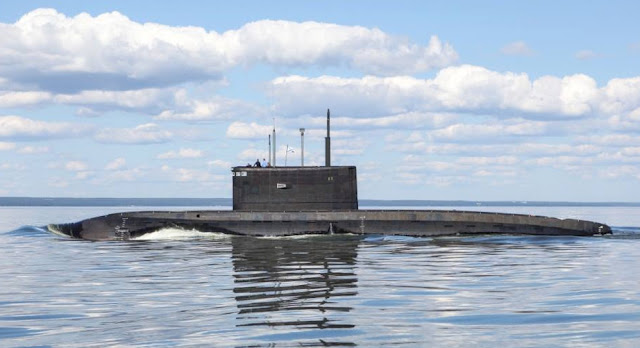The Kilo-Class Submarine: Why Russia's Enemies Fear "The Black Hole" ( Source- The National Interest / Author- Kyle Mizokami)
 |
| Kilo class submarine ( Image credits- Wikimedia Commons / Russian Ministry of Defense) |
Source- The National Interest
Author- Kyle Mizokami
Unlike the United States Navy, which went all-in on nuclear power, Russia maintains fleets of both diesel and nuclear-powered submarines. A land power encompassing much of Eurasia, Russian submarines are based much closer to “the action” than American submarines are. While Russia maintains nuclear submarines for distant ocean patrols, its fleet of diesel submarines is more than adequate for conflicts in Europe, the Middle East and the Russian near abroad.
The mainstay of the Russian Navy’s conventionally powered fleet are Project 877–class submarines, known as the Kilo class to NATO and the West. Nicknamed the “Black Hole” submarine by the U.S. Navy, the Improved Kilos are extremely quiet. The class has been built more or less continuously for thirty years, a testament to their effectiveness at sea............. ( Now click here to read the complete article)
Comments